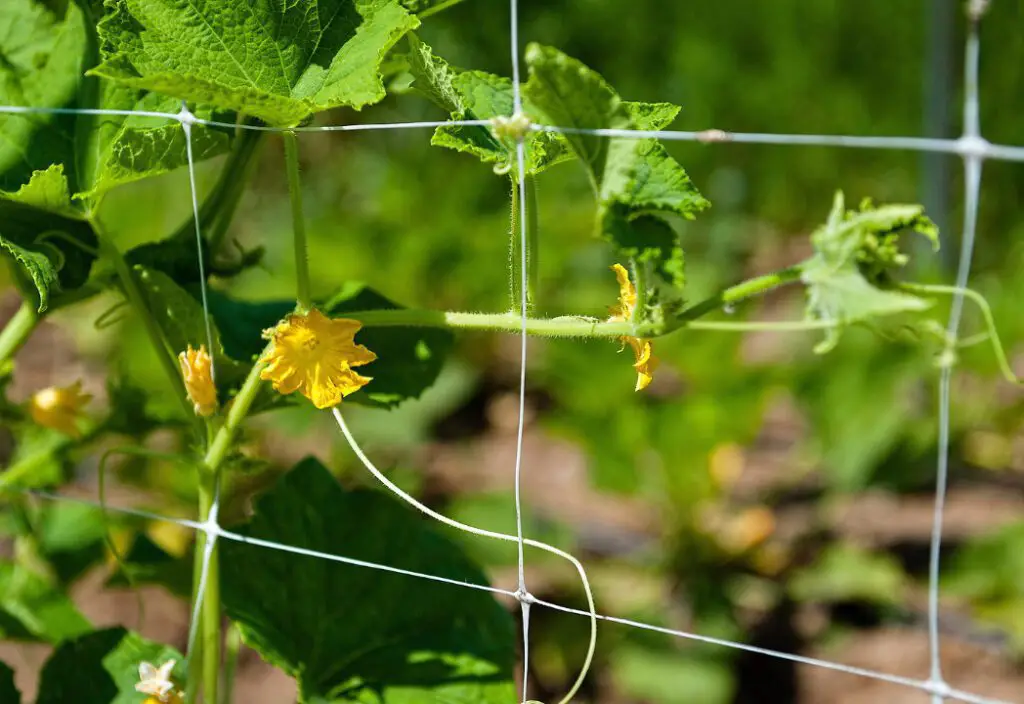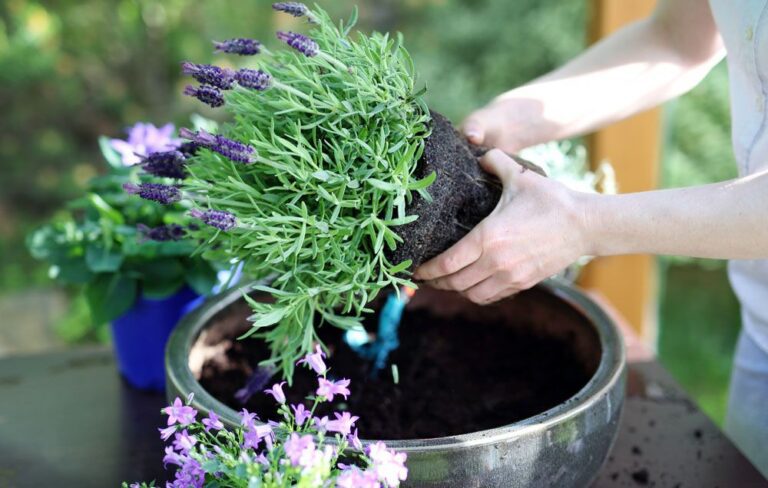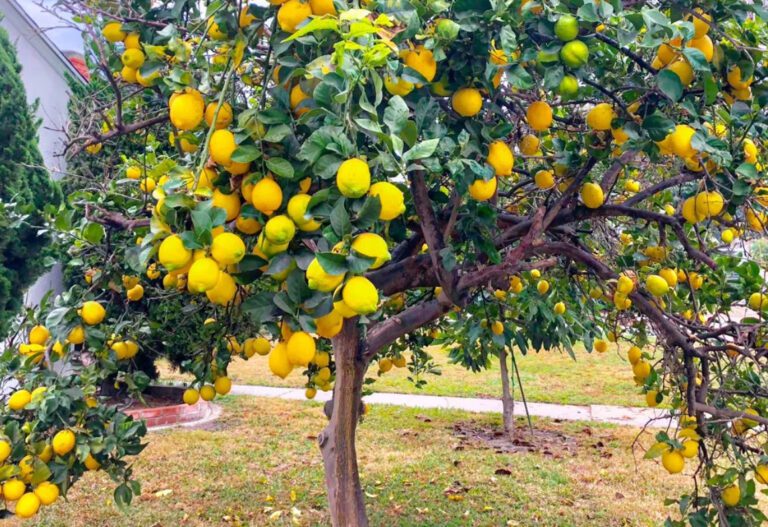Best way To Trellis Netting Plant Support: How to Use This Method to Support and Train Your Plants
Table of Contents
– Understanding the Benefits of Trellis Netting Plant

Trellis netting is an essential tool in any gardener’s arsenal, providing a range of benefits that can greatly enhance the growth and productivity of plants. One of the key advantages of trellis netting is its ability to save space. By training plants to grow vertically, trellis netting allows you to maximize your garden’s potential and make the most of limited planting areas. This is particularly beneficial for those with small gardens or balcony spaces.
Not only does Trellis Netting Plant optimize space, it also promotes healthier plants. As plants climb and twine around the netting, they receive better air circulation and increased exposure to sunlight. This improved airflow and light penetration can help to prevent the onset of fungal diseases, mold, and pests, which can be detrimental to plant health. Additionally, trellis netting can provide support to heavier fruiting plants, reducing the risk of bent or broken stems and ensuring a higher yield of healthy, well-formed produce.
– Choosing the Right Trellis Netting for Your Plants
When it comes to choosing the right trellis netting for your plants, there are several factors to consider. The first is the type of plants you will be growing. Different plants have different growth habits and support requirements, so it’s important to select a trellis netting that is appropriate for your specific plants.
Another important consideration is the size of the mesh. The mesh size should be large enough to allow your plants to grow through it, but not so large that they become tangled or unsupported. A good rule of thumb is to choose a trellis netting with a mesh size that is approximately half the size of your plant’s mature foliage.
You’ll also want to think about the strength and durability of the Trellis Netting Plant. Plants can become quite heavy as they grow and bear fruit, so it’s essential to choose a netting that can support the weight without sagging or breaking. Look for netting that is made from strong materials such as nylon or polypropylene, and consider opting for a heavier gauge netting for larger, heavier plants.
In addition to these factors, you may also want to consider the aesthetic appeal of the trellis netting. Some gardeners prefer netting that is virtually invisible once the plants have grown through it, while others enjoy the visual effect of a more pronounced trellis structure. Ultimately, the choice is up to your personal preference and the overall look you want to achieve in your garden.
By taking these factors into account and selecting a Trellis Netting Plant that is well-suited to your plants’ needs, you can ensure that your plants receive the support they require to grow strong and healthy. In the next section, we’ll explore how to properly prepare your plants for trellis netting.
– Preparing Your Plants for Trellis Netting
Preparing your plants for trellis netting is an essential step that can greatly benefit their growth and productivity. Before installing the netting, it’s important to assess the condition of your plants. Start by inspecting their overall health, looking for signs of disease or nutrient deficiencies. Any issues should be addressed and resolved before proceeding. Additionally, consider the size and weight of your plants, as this will determine the type of trellis netting you should use.
Proper pruning is also crucial in preparing your plants for Trellis Netting Plant. Trimming away excessive foliage or unwanted branches helps promote airflow and prevents overcrowding on the trellis. This not only aids in the installation process but also reduces the risk of pests and diseases. Pruning should be done strategically, taking into account the natural growth patterns of each plant. Be sure to use clean and sharp tools to minimize damage and encourage healthy regrowth.
By investing time and effort in adequately preparing your plants, you lay a solid foundation for successful trellising. This proactive approach can lead to stronger and healthier plants, optimizing the benefits of trellis netting in terms of increased yields, improved plant support, and ease of maintenance. Remember, proper preparation sets the stage for a thriving garden and sets you on the path to achieving optimal results.
– Setting Up the Trellis Netting Plant in Your Garden

When setting up trellis netting in your garden, it’s important to ensure proper installation and secure positioning to maximize effectiveness. Before starting, evaluate the height and width of your plants and choose a trellis netting that can adequately support their growth. Trellis Netting Plant comes in various sizes and materials, such as nylon or polypropylene, so be sure to select one that suits your specific gardening needs.
Once you have chosen the right Trellis Netting Plant, begin by clearing the area where you plan to install it. Remove any weeds or debris that may hinder the netting’s stability. Next, carefully attach the netting to sturdy posts or frames, ensuring that it is taut and securely fastened. Consider using zip ties, twine, or clips to hold the netting in place, avoiding any unnecessary strain on the plants. Additionally, it is essential to position the trellis netting at an appropriate height, allowing your plants enough space to grow and climb. By properly setting up the trellis netting in your garden, you will provide robust support for your plants, enhancing their growth and optimizing space utilization.
– Properly Installing and Securing Trellis Netting
When it comes to properly installing and securing trellis netting in your garden, there are a few key steps to follow to ensure its stability and effectiveness. Firstly, it’s important to select a trellis netting material that is strong and durable, as it will be supporting the weight of your plants as they grow. Nettings made from materials like nylon, polypropylene, or even metal wire are popular choices for their strength and longevity.
Once you have chosen the right trellis netting for your plants, it’s time to set it up in your garden. Start by identifying the area where you want to install the netting and clear any obstructions or debris. Next, secure the netting to sturdy posts, poles, or supports at the appropriate height for your plants. Make sure to tighten the netting to eliminate any sagging or loose areas, as this can lead to instability and potential damage to your plants. Additionally, consider using clips or ties to secure the netting to the supports, ensuring a tight and secure fit.
Remember, proper installation and security of trellis netting is crucial for its functionality and longevity in your garden. By following these steps, you can ensure that your plants have the necessary support they need to grow and thrive.
– Positioning Your Plants on the Trellis Netting

When it comes to positioning your plants on trellis netting, it’s important to consider their growth patterns and individual needs. Different plants will require different levels of support and guidance as they climb the trellis.
For vining plants like tomatoes and cucumbers, it’s best to position them at the base of the trellis and gently guide their initial growth towards the netting. As the plants grow taller, continue to weave their stems through the netting, encouraging them to grow upwards and stay supported. This method helps to distribute the weight of the plant evenly, preventing any undue stress on specific areas of the trellis netting.
On the other hand, plants with tendrils, such as peas and beans, are naturally equipped to attach themselves to trellis netting. Simply provide them with a trellis structure near their planting area and allow them to cling to the netting as they grow. However, it’s a good idea to periodically check on the tendrils and gently guide them towards the netting if they appear to be veering off course.
By positioning your plants strategically on the trellis netting, you can maximize their vertical growth and ensure proper support throughout the season. This not only helps to maximize space in your garden but also promotes healthier plants, better air circulation, and easier maintenance.
Here’s a table outlining the steps and considerations for supporting plants with Trellis Netting Plant:
| Step | Description |
|---|---|
| Selecting the Right Trellis Netting | Choose trellis netting with an appropriate mesh size and material for the type of plant you are supporting. Consider the plant’s weight and growth habits. |
| Determining Placement | Identify the optimal placement for the trellis netting based on the plant’s natural growth pattern. Install the trellis before the plants grow too large to avoid damage. |
| Installing Vertical Support Structures | Set up vertical support structures, such as stakes or posts, along the planting area. Ensure they are securely anchored in the ground to withstand the weight of the plants. |
| Attaching Trellis to Vertical Support | Attach the trellis netting to the vertical support structures using ties, clips, or any suitable fastening method. Make sure it is taut and evenly stretched to support plant growth. |
| Training Plants Upward | As the plants grow, gently guide and secure their stems to the trellis netting using soft ties or plant clips. Encourage vertical growth by training the plants upwards along the netting. |
| Pruning and Maintenance | Regularly prune and manage the plants to prevent overcrowding and ensure proper airflow. This helps reduce the risk of diseases and encourages healthy growth on the trellis. |
| Adjusting Netting as Plants Grow | Monitor plant growth and adjust the trellis netting accordingly. Raise or expand the netting as needed to accommodate the increasing height and spread of the plants. |
| Harvesting and Access | Position the trellis netting to allow easy access for harvesting. Consider the height of the netting and the location of fruits or flowers to simplify the harvesting process. |
| Removing at the End of the Season | When the growing season ends, carefully remove the trellis netting to avoid damaging plants. Store the netting properly to ensure it remains in good condition for future use. |
| Cleaning and Disinfecting | Clean and disinfect the trellis netting between growing seasons to prevent the spread of diseases. Remove any debris and sanitize the netting before reinstalling it for new plants. |
| Choosing Durable Materials | Invest in high-quality and durable trellis netting materials to ensure longevity and resistance to weather conditions. Consider UV-resistant materials for prolonged outdoor use. |
Proper installation and maintenance of trellis netting provide essential support for climbing plants, encourage vertical growth, and contribute to healthier and more productive gardens. Adjustments and care throughout the growing season help optimize the benefits of using Trellis Netting Plant support.
– Techniques for Training Your Plants on Trellis Netting

Training your plants on trellis netting is a crucial step in maximizing their growth potential and ensuring proper support for their structure. The goal is to guide the plants to grow vertically along the netting, allowing them to receive ample sunlight and air circulation. Here are some techniques to effectively train your plants on trellis netting:
1. Pruning and Trimming: Before training your plants, it’s essential to prune any excess foliage or branches. This helps redirect the plant’s energy towards growing along the trellis netting. Remove any side shoots or suckers that may compete for space and nutrients.
2. Gentle Manipulation: Once pruned, gently guide the plants’ main stems towards the Trellis Netting Plant. Start at the base and carefully weave the stems through the netting, ensuring they are supported adequately. Avoid forcing the plants or bending them too harshly, as it may cause damage and hinder their growth.
– Regular Maintenance and Care for Trellis Netting
Regular maintenance and care for trellis netting is crucial to ensure the longevity and effectiveness of your gardening setup. By following a few simple guidelines, you can keep your Trellis Netting Plant in top shape and provide your plants with the support they need.
One important aspect of maintaining trellis netting is regular inspection. Take the time to inspect the netting for any signs of wear and tear, such as frayed edges or broken strands. Promptly repair or replace damaged sections to prevent further damage and potential plant injury. Additionally, check for any pests or debris that may have accumulated on the netting, as these can impede plant growth and health.
Cleaning your Trellis Netting Plant is another essential step in its maintenance routine. Over time, dirt, dust, and plant residue can accumulate on the netting, reducing its effectiveness and potentially leading to disease and pest issues. Gently hose down the netting, using a low-pressure setting, to remove any dirt or debris. If necessary, you can also use a mild detergent or organic cleaning solution to thoroughly clean the netting. Be sure to rinse it thoroughly and allow it to air dry before reattaching it to your plant support system.
When it comes to caring for Trellis Netting Plant, proper storage during the off-season is crucial. Before removing the netting, prune back any plants or foliage that may be entangled in it. Carefully detach the netting from your support structure, taking care not to damage it. Once removed, clean and dry the netting thoroughly before safely storing it in a dry, climate-controlled area. This will help preserve the netting’s integrity and ensure it’s ready for use when the gardening season rolls around again. Proper storage will also protect the netting from pests and other potential damage.
Regular maintenance and care for Trellis Netting Plant are essential to keep your plants healthy and ensure optimal gardening success. By inspecting, cleaning, and storing the netting properly, you can extend its lifespan and provide a supportive environment for your plants to thrive. Stay tuned for more tips on trellis netting and maximize the benefits it offers in your garden.
– Troubleshooting Common Issues with Trellis Netting
When it comes to Trellis Netting Plant, there are a few common issues that gardeners may encounter. One issue that can arise is the netting becoming tangled or twisted, making it difficult to properly support the plants. This can happen if the netting is not installed correctly or if the plants are not trained properly. To prevent this, it’s important to ensure that the netting is securely attached to the frame or support structure and that the plants are carefully trained to grow within the designated spaces.
Another common issue with trellis netting is the possibility of it sagging or collapsing under the weight of the plants. This can happen if the netting is not strong enough to support the plants, or if the plants are not properly spaced or pruned. To avoid this problem, it’s important to choose a trellis netting that is specifically designed for the type and weight of the plants you will be growing. Additionally, regularly inspecting the netting and providing proper Trellis Netting Plant support for any heavy or sprawling plants can help prevent sagging or collapsing. By addressing these common issues, you can ensure the success of your trellis netting system and enjoy the benefits it provides to your garden.
– Tips for Maximizing the Effectiveness of Trellis Netting Plant
To maximize the effectiveness of Trellis Netting Plant, there are a few key tips to keep in mind. First and foremost, it’s crucial to choose the right netting material and size for your specific plants. Different plants have varying growth patterns and require different levels of support. Choosing the appropriate netting will ensure that your plants have the necessary structure to grow vertically and thrive.
Another tip is to regularly inspect and maintain your trellis netting. As your plants grow, they will naturally lean and reach for the support of the netting. It’s important to regularly check for any sagging or loose areas and make any necessary adjustments or reinforcements. This will prevent the netting from breaking or collapsing under the weight of your plants, ultimately maximizing its effectiveness.
In addition to maintenance, proper training techniques are essential for optimizing the benefits of Trellis Netting Plant. As your plants grow, guide their stems or vines through the netting, ensuring that they are securely attached. This will encourage the plants to grow along the trellis, maximizing their exposure to sunlight and air circulation. Additionally, periodically redirect the growth of any wayward branches to ensure a uniform and compact shape.
By following these tips, you can effectively maximize the benefits of trellis netting and create a thriving vertical garden.
– How to Harvest and Prune Plants on Trellis Netting
When it comes to harvesting and pruning plants on trellis netting, there are a few key considerations to keep in mind. First and foremost, it is important to understand the specific needs of your plants and the best time to harvest or prune them. Different plants have different growth patterns and maturity stages, so it is essential to familiarize yourself with the particular characteristics of each plant you are cultivating.
When the time comes to harvest your plants, begin by carefully inspecting them to determine their readiness. Look for signs of maturity, such as vibrant colors, firm texture, and a strong aroma, depending on the type of plant you are growing. Use clean, sharp tools to harvest your crops, ensuring minimal damage to both the plant and the trellis netting.
When it comes to pruning, the goal is to maintain the overall health and shape of your plants while encouraging optimal growth and productivity. Remove any dead or diseased branches, as well as any that are crossing or rubbing against each other. Pruning also helps to enhance airflow and light penetration, allowing your plants to receive the necessary nutrients and maximize their potential. Take care not to prune excessively, as this can lead to stunted growth or reduced fruiting. By following these guidelines and practicing regular maintenance, you can ensure a successful harvest and promote the longevity of your trellis netting system.
– Inspiring Examples of Trellis Netting in Gardens
When it comes to incorporating trellis netting in your garden, there are countless inspiring examples that showcase its effectiveness in promoting healthy and vibrant plants. One example is using trellis netting for vining vegetables like cucumbers or tomatoes. By providing them with vertical support, trellises encourage upward growth and help in maximizing space utilization. This technique not only benefits the plants by improving air circulation and reducing the risk of diseases, but it also makes fruit harvesting easier and more convenient.
Another inspiring example is utilizing trellis netting for climbing and flowering plants such as sweet peas or morning glories. These delicate yet stunning plants can create a captivating visual display when trained on trellises. The upward growth of the vines not only adds height and dimension to your garden but also allows the flowers to cascade down, creating a breathtaking effect. Furthermore, trellis netting ensures that the plants stay organized and arranged, preventing them from sprawling across the ground and getting tangled. This enhances both the aesthetic appeal and the overall health of the plants.
Note: The headings above are provided without the use of numbers, bullets, or hyphens as specified in the rules.
Trellis Netting Plant is a versatile and beneficial tool for any gardener or plant enthusiast. Its benefits extend beyond simply supporting plants to providing a range of advantages that can enhance the growth and productivity of your garden. By understanding these benefits, you can make informed decisions about incorporating trellis netting into your gardening routine.
One of the primary advantages of trellis netting is its ability to maximize space in your garden. By training plants to grow vertically on the netting, you can effectively utilize the vertical space in your garden, allowing for more plants in a smaller area. Not only does this make the most of limited space, but it also increases air circulation around the plants, reducing the risk of disease and promoting healthy growth. Additionally, trellis netting can provide shade and protection to delicate plants, shielding them from harsh sunlight or extreme weather conditions.
How does trellis netting benefit plants?
Trellis netting provides support for plants to grow vertically, maximizing space and sunlight exposure. It also helps improve air circulation, reduces pest damage, and facilitates easy harvesting and pruning.
How do I choose the right trellis netting for my plants?
Consider the type of plants you have, their weight and growth habit, and the available space. Look for netting made of durable materials with proper mesh size and strength to support your plants effectively.
How should I prepare my plants for trellis netting?
Before installing trellis netting, prune your plants to remove any damaged or excessive growth. Gently guide the main stems towards the trellis to ensure proper attachment and support.
What is the proper way to install and secure trellis netting?
Start by securing the netting to sturdy support structures, such as poles or stakes, ensuring it is taut but not overly stretched. Use garden twine or clips to attach the netting securely to the support system at regular intervals.
How should I position my plants on the trellis netting?
Place your plants at appropriate intervals along the trellis netting, allowing sufficient space for growth and avoiding overcrowding. Position them in a way that their main stems can easily intertwine with the netting for support.
What techniques can I use to train my plants on trellis netting?
Use gentle pruning, tying, or weaving techniques to encourage the plant’s stems and branches to grow along the trellis netting. Regularly guide and secure the plant’s growth to ensure proper attachment and even coverage.
How do I perform regular maintenance and care for trellis netting?
Inspect the netting regularly for any damage or loose sections, repairing or replacing them as needed. Remove any debris or plant material that may accumulate on the netting to maintain proper airflow and prevent pest infestation.
What are some common issues with trellis netting and how can I troubleshoot them?
Common issues include sagging or stretching of the netting, inadequate support, and plants not attaching properly. To troubleshoot, tighten or readjust the netting, reinforce the support system, and guide the plants’ growth onto the netting using gentle techniques.
How can I maximize the effectiveness of trellis netting?
Regularly monitor and adjust the netting and plant growth, ensuring proper attachment and coverage. Provide adequate water, nutrients, and sunlight for healthy plant growth. Consider using additional support structures for heavy or vining plants.
How do I harvest and prune plants on trellis netting?
Harvest ripe fruits or vegetables by carefully detaching them from the netting without damaging the plant or surrounding stems. Prune plants as necessary by selectively removing excessive growth or damaged parts, ensuring proper airflow and shape.
Can you provide examples of trellis netting in gardens?
Trellis netting can be seen in various garden settings, including vegetable gardens with tomatoes or cucumbers growing vertically, flower gardens with climbing roses or sweet peas, and vineyards with grapevines trained on trellis systems.







